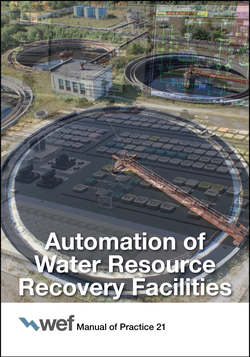Читать книгу Automation of Water Resource Recovery Facilities - Water Environment Federation - Страница 23
2.1.1 Labor Savings
ОглавлениеThere are many facilities with a significant manual operational component in which automation can result in reduced labor. Increased automation can
• Reduce instances of “walking the facility” and visiting remote facilities to check and control the processes;
TABLE 2.1 Operating costs for a typical WRRF (Hamilton et al., 2009).
• Eliminate repetitive tasks such as filling tanks and adjusting chemical flows;
• Minimize the need for staff presence at a particular place at a specific time;
• Reduce time for the collection of operational data;
• Reduce laboratory work collecting and processing samples; and
• Reduce the time for compiling regulatory, operational, and management reports.
A fully automated process area would automatically handle ordinary events and alarm an operator when an unusual event occurs.
Labor savings can be estimated by itemizing individual tasks performed by operations staff with estimates of the time and frequency of each task, both before and after automation improvements. It is important to account for additional training, testing, and verification activities needed to confirm that automation improvements are achieving the desired goals.
Labor savings opportunities can be substantial for some facilities. The City of Anchorage Water and Wastewater System in Anchorage, Alaska, increased facility capacity by 62% during a 10-year period while staff was reduced by 15% (47 people) during the same period. A significant component of this savings was attributable to automation (Patrick, 1997).
Estimated reductions in labor should be partially offset by anticipated increases in maintenance and calibration labor for the additional automation components.
